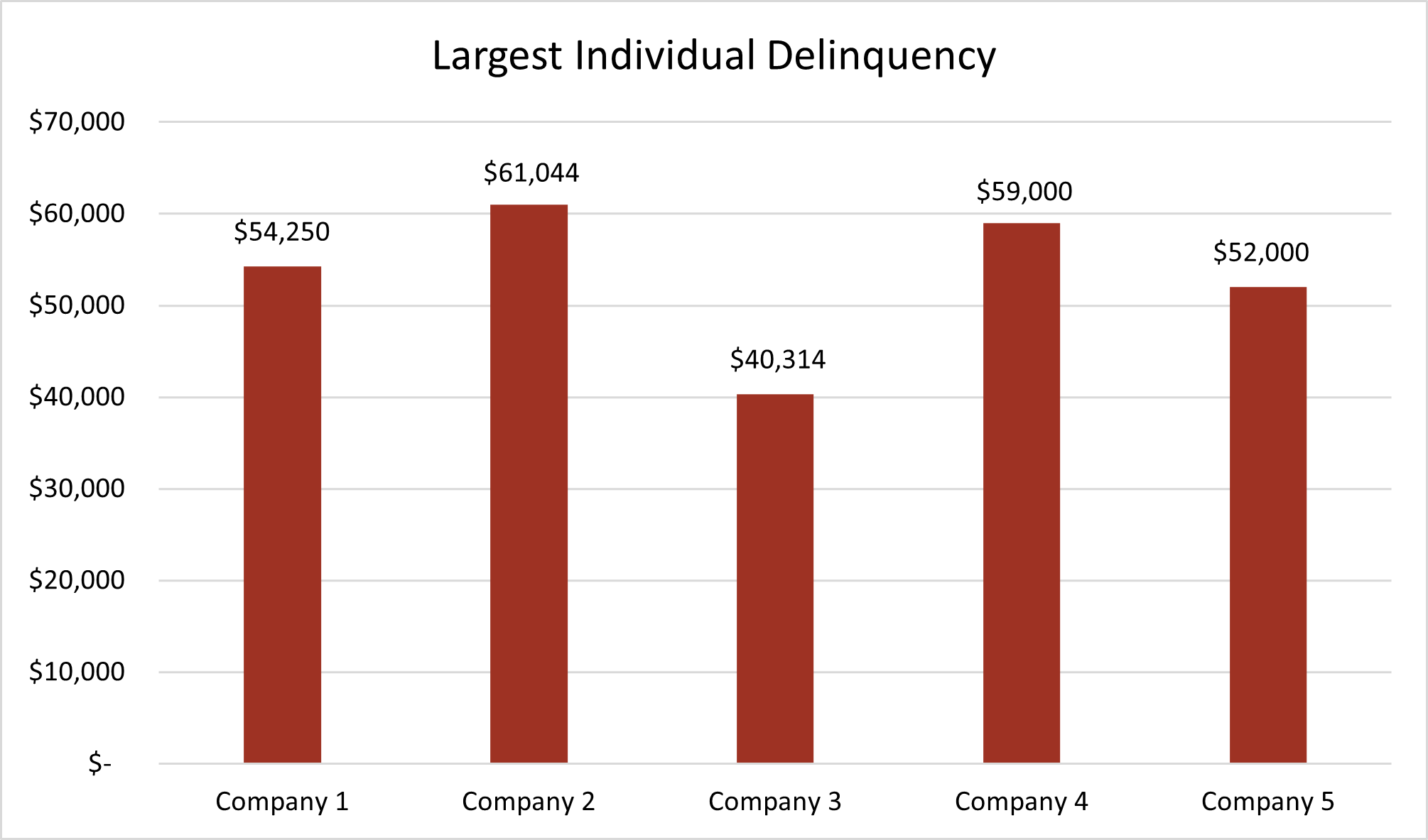A Looming Crisis Part II: Severe Rent Delinquency is a Ticking Time Bomb
|
Part I of this series, which summarizes the findings of AOBA's Looming Crisis report, detailed the skyrocketing operating costs of multifamily housing in the District. In Part II, we examine the scope of the growing rent delinquency crisis and what is driving it.
The Rent Delinquency Crisis and its ScopeIn addition to skyrocketing operational costs, housing providers are also getting squeezed by a significant increase in tenant falling months behind on rent. AOBA conducted a survey of member companies that own and operate market-rate affordable and rent-controlled apartment housing in the District. Respondents were asked for point-in-time rent delinquency numbers for calendar years 2019 and 2024. Results show a sixfold increase in delinquency loss in 2024 compared to 2019. This data does not include rent delinquency that accumulated in the intervening years, meaning these results severely under count the total outstanding delinquent rent respondent companies are carrying.
These delinquency numbers are the result of a small proportion of renters accumulating several months' worth of back rent. The average largest individual rent delinquency across the five respondent companies in AOBA's survey was $53,321.
  Extended Court Timelines are Exacerbating the CrisisExacerbating this dynamic are landlord-tenant cases taking 2-3 times longer to resolve than 2019 before the pandemic.
A primary policy driver of extended eviction timelines contributing to the ongoing rent delinquency crisis is the mandatory case stay provision within the Tenant Safe Harbor Amendment Act. The Council has the unilateral authority to change this provision. The Act requires a judge to stay a case when a tenant submits documentation demonstrating they have a pending ERAP application until tenant eligibility is determined and, if approved, funding is distributed. the case is stayed regardless of whether the tenant qualifies for rental assistance or whether that assistance covers the full outstanding rent balance (the maximum payout is capped at 5 month's rent). A pending eviction must also be stayed if a tenant notifies their housing provider that they have a pending ERAP application no later than 48 hours before a scheduled eviction. The ERAP program opens for applications quarterly. Therefore, cases are routinely stayed for multiple months while waiting or the program to open and applications to be processed. While this was an important provision during the pandemic, it has morphed into a driver of rent delinquency that sees tenants fall behind on rent to levels greater than the program can cover. Part III will detail practical solutions to the rent delinquency crisis
|

